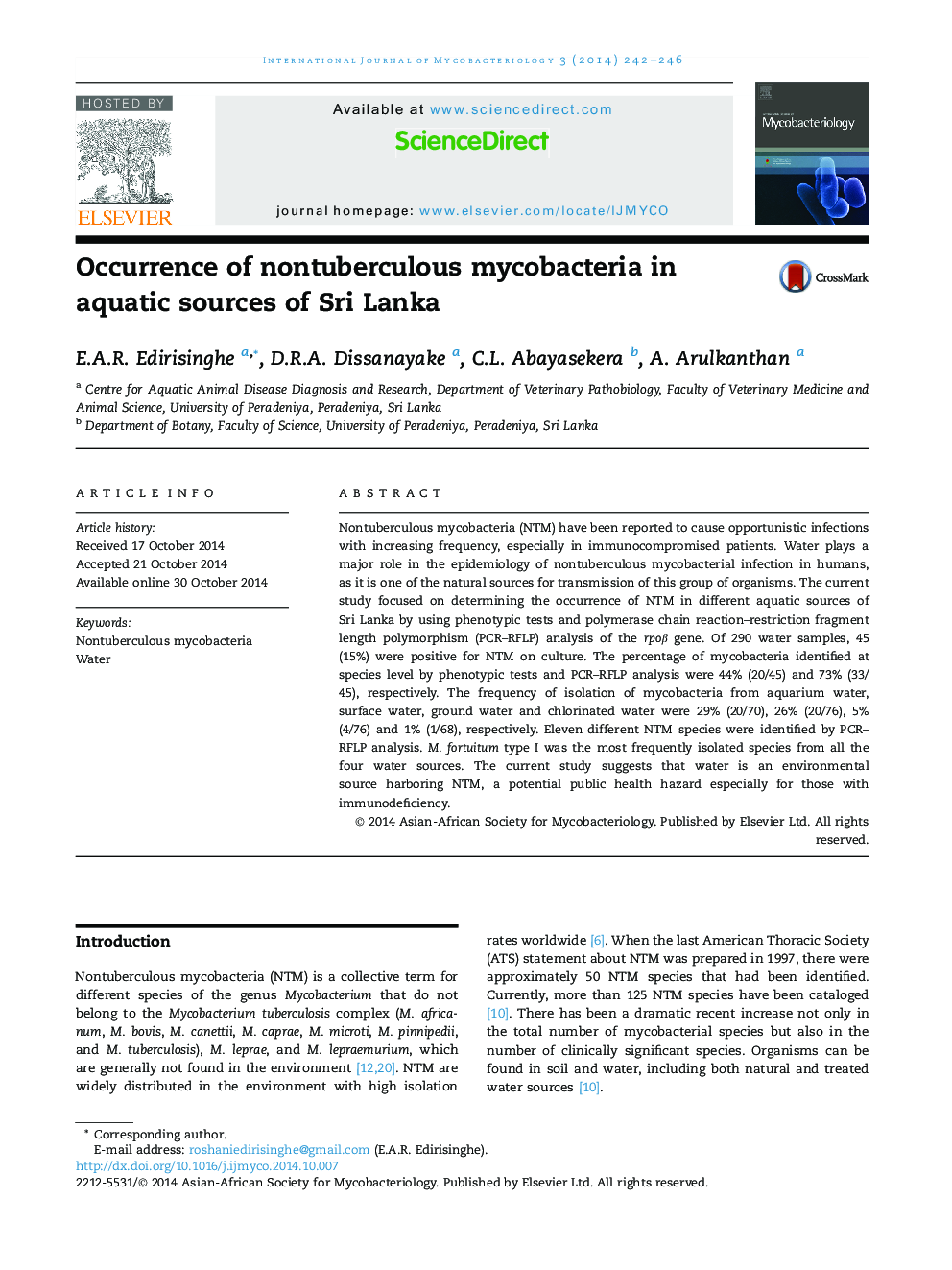| Article ID | Journal | Published Year | Pages | File Type |
|---|---|---|---|---|
| 3405186 | International Journal of Mycobacteriology | 2014 | 5 Pages |
Nontuberculous mycobacteria (NTM) have been reported to cause opportunistic infections with increasing frequency, especially in immunocompromised patients. Water plays a major role in the epidemiology of nontuberculous mycobacterial infection in humans, as it is one of the natural sources for transmission of this group of organisms. The current study focused on determining the occurrence of NTM in different aquatic sources of Sri Lanka by using phenotypic tests and polymerase chain reaction–restriction fragment length polymorphism (PCR–RFLP) analysis of the rpoβ gene. Of 290 water samples, 45 (15%) were positive for NTM on culture. The percentage of mycobacteria identified at species level by phenotypic tests and PCR–RFLP analysis were 44% (20/45) and 73% (33/45), respectively. The frequency of isolation of mycobacteria from aquarium water, surface water, ground water and chlorinated water were 29% (20/70), 26% (20/76), 5% (4/76) and 1% (1/68), respectively. Eleven different NTM species were identified by PCR–RFLP analysis. M. fortuitum type I was the most frequently isolated species from all the four water sources. The current study suggests that water is an environmental source harboring NTM, a potential public health hazard especially for those with immunodeficiency.
